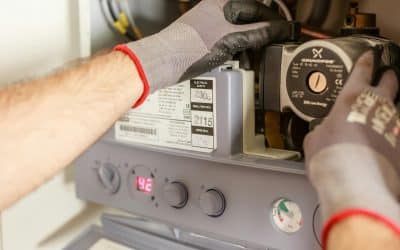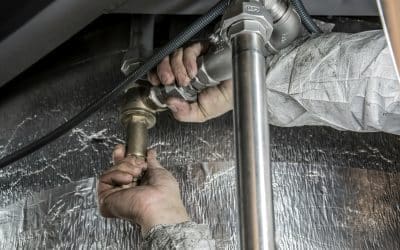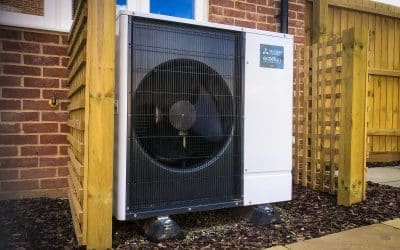Now that winter is pretty much here, all of the UK will soon be covered in waves of ice and snow. And while the cold spell is bearing down upon us, we might not even consider the ground as a source that emits heat but, you’re in for a surprise. The surface beneath the ground is a source of natural recurring heat which can be used to fire up your central heating system. This can provide comfortable temperatures and constant hot water supply in both commercial and residential properties.
Wondering how to channel this trapped heat from the ground to heat your home and office?
Ground source heat pumps (GSHPs) are the answer.
Not only do these provide a very efficient and clean form of electric heating, they’ll also qualify you to receive financial incentives under the Renewable Heat Incentive. GSHPs extract the trapped heat from beneath the ground’s surface (which keeps getting replenished by the sun, even in winter) and pass it through the heat exchanger mechanism. This increases the temperature of the water that’s sufficient to heat a property.
So, when you plan to install a ground source heat pump, it’s important that you consider a few crucial aspects.
Do You Have Enough Ground Space Available?
Ground source heat pump installation requires an area large enough to accommodate all the components of the heating system. In the UK, most systems use a series of pipes or loops that collect heat. This is concealed in the shallow trenches beneath the surface. You need to check if you have enough space to install these, especially if you need to heat a large property. If not, you could always place the heat collector component in a vertical borehole as it requires limited surface area for installation.
How Well is Your Property Insulated?
Installing heating systems is going to cost you money. If your property isn’t adequately insulated, the heat produced will be wasted because of poorly insulated ceilings, walls and floors. When you plan to install a new system, it might be more economical to add an extra layer of insulation to lower the running and installation costs.
Do You Need a Big or a Small Heating System?
This is where things get tricky and it may be worth speaking to the experts at JL Phillips for help. For this, you’ll first have to calculate the heat loss through the fabric of your property. You can calculate maximum heat demand under ideal weather conditions in winter. This calculation will reveal if you require hot water either wholly or partially through the heat pump. We’ll then be able to decide the optimal size of heat collecting loops required for the trenches/borehole. We’ll also be able to tell you if the ground conditions will enable heat replenishment around the loops in the summer months. This will help with successful heat extraction during winters for several years to come.
Irrespective of the size of the system, you can still get your free quick quote today.
Can Other Heating Methods Be Combined With Ground Source Heat Pump?
GSHP function most efficiently when the water is raised to around 40°C. This makes them most suitable for a wet underfloor heating system, but ‘oversized’ radiators are a great alternative. Because installing a brand new wet underfloor heating system into an existing building is expensive, GSHPs are mostly fixed in new properties. Although, you can still install these in older buildings if you pay attention to the overall insulation of the premises. Oversizing your radiators will also help with GSHP installation.
Over Time, How Efficiently Do Heat Pumps Perform?
The sun is the primary source of energy that’s collected by the buried loops as the ground absorbs the heat from the surface of the earth. Electricity is the only conventional energy used to operate the ground source heat pump and its compressors which basically run the system. Essentially, these components use only ¼ of the energy when compared to the heating energy supplied into the property. This means that GSHPs can be up to 300 to 400% more efficient.
The performance of the ground source heat pump can be attributed to the overall quality of its installation and design. At JL Phillips, our team can help you achieve just that.
Call us today and we’ll drop by to survey your property for renewable heating installation.





